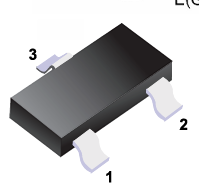Date:2025-06-23 Categories:Product knowledge Hits:475 From:Guangdong Youfeng Microelectronics Co., Ltd
In the realm of modern electronics,
digital transistors play a pivotal role in shaping the functionality of countless electronic devices. These components are not just fundamental building blocks but also essential elements that enable the efficient processing and transmission of digital signals. Understanding their principles, characteristics, and applications is crucial for electronics engineers, hobbyists, and anyone interested in the inner workings of
digital transistors.
Definition and Basics
A
digital transistors is a type of bipolar junction transistor (BJT) or field-effect transistor (FET) specifically designed for digital circuits. Unlike analog transistors, which are mainly used for signal amplification and operate in the active region of their characteristic curve,
digital transistors are engineered to function primarily as electronic switches. They rapidly transition between the “on” and “off” states, which correspond to the binary values of 1 and 0 in digital logic systems.
Digital transistors typically come integrated with additional resistors on the same chip, forming a pre-configured circuit. For instance, in a common digital transistor package, there might be a base resistor (in the case of BJTs) already connected to the transistor. This integration simplifies circuit design, reduces the need for external discrete resistors, and enhances the overall reliability and compactness of the circuit.
digital transistorsWorking Principle
Bipolar Junction Transistors (BJTs)
In digital circuits, BJTs are often used in the saturation and cutoff regions. When a sufficient base current is applied to an NPN digital BJT, the transistor enters the saturation region. In this state, the collector-emitter voltage (VCE is very low, typically around 0.2 - 0.3 volts, effectively creating a low-resistance path between the collector and the emitter. This is equivalent to the “on” state, allowing a large current to flow from the collector to the emitter, which represents the binary value 1.
digital transistorsConversely, when the base current is removed or is below a certain threshold, the transistor enters the cutoff region. Here, the collector current (IC) is almost zero, and the collector-emitter path acts as an open circuit, representing the “off” state or the binary value 0.
Field-Effect Transistors (FETs)
For digital FETs, such as metal-oxide-semiconductor field-effect transistors (MOSFETs), the operation is based on the control of an electric field. In an N-channel MOSFET, when a positive voltage is applied to the gate relative to the source, it creates an electron-conducting channel between the source and the drain. As the gate voltage exceeds a certain threshold voltage (VT), the transistor turns “on,” allowing current to flow from the drain to the source, corresponding to the binary 1. When the gate voltage is below the threshold voltage, the channel does not form, and the transistor is in the “off” state, with minimal current flow, representing binary 0.
digital transistors
